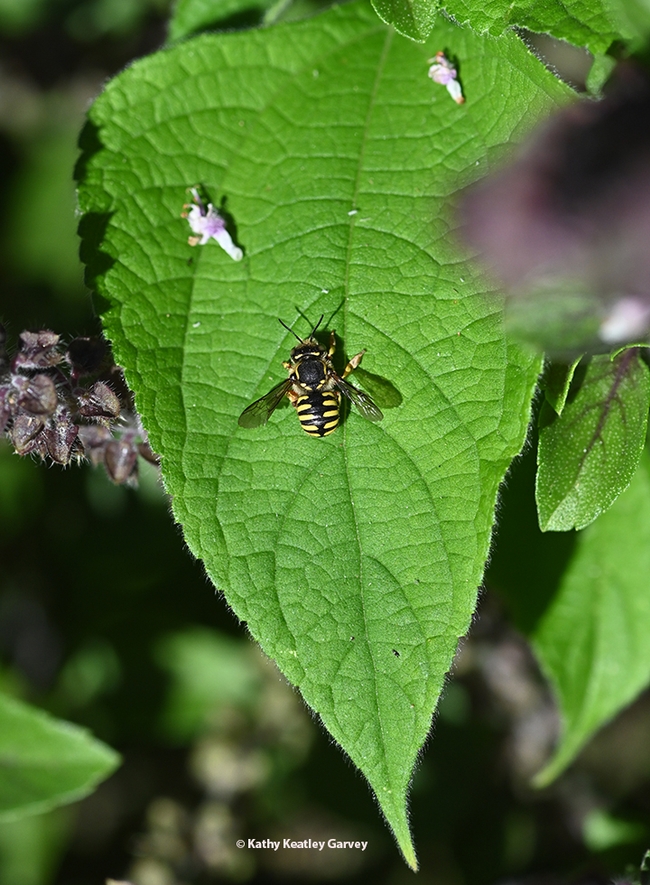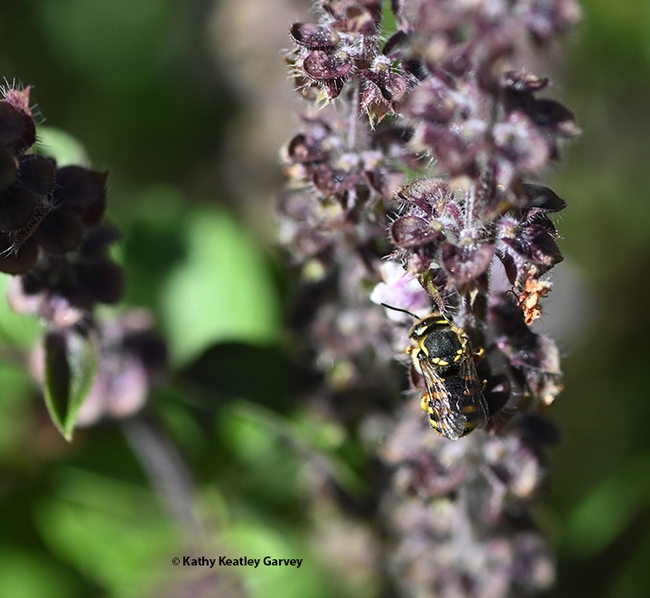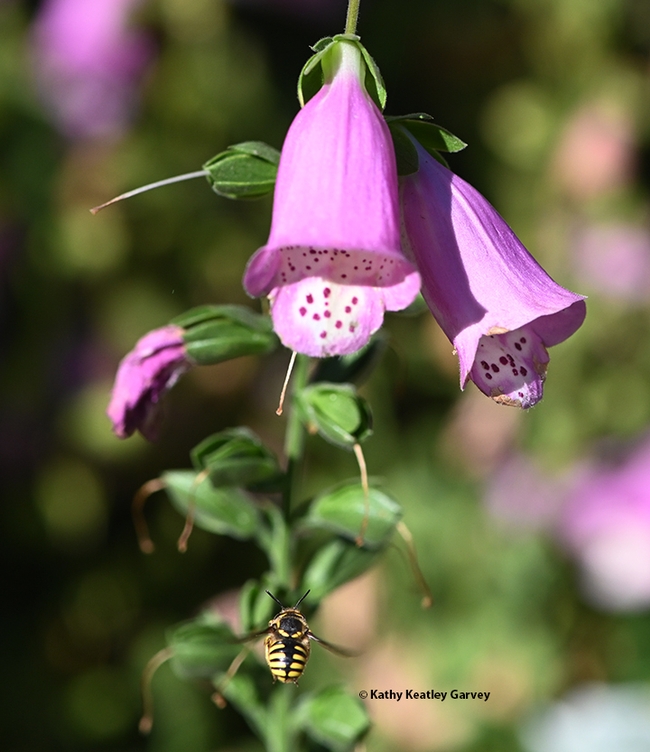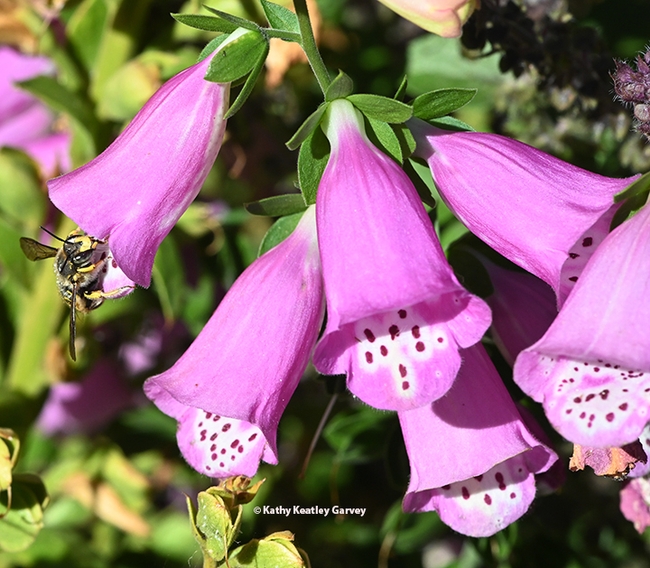It's almost the end of the season for the European wool carder bee, Anthidium manicatum.
A few still hang around the foxgloves, the catmint and the African blue basil in our pollinator garden. They really stand out when they're visiting the hot pink foxgloves (by the way, all parts are poisonous except for the roots), but they're difficult to see when they line up with the African blue basil and the catmint.
Natives of Europe, they were named "carder bees" because the females collect or "card" plant hairs for their nests. The bees, about the size of honey bees, are mostly black and yellow. The females range in body length from 11 to 13 millimeters, while the males are 14 to 17 mm. The males are very territorial as they protect their turf and bodyslam other insects.
These colorful bees were first detected in the United States (New York) in 1963, and first recorded in California (Sunnyvale) in 2007. By 2008, they were well established in the Central Valley, according to Lynn Kimsey, director of the Bohart Museum of Entomology and a UC Davis distinguished professor of entomology. We saw our first one in Vacaville in the spring of 2010.
The bee, according to research entomologist Tom Zavortink of the Bohart Museum of Entomology at UC Davis, was accidentally introduced into New York state. It was not purposefully introduced to pollinate alfalfa, as some reports allege, he said.
Writing in a 2008 edition of the Pan-Pacific Entomologist, Zavortink and fellow entomologist Sandra Shanks, now of Port Townsend, Wash., pointed out that several papers “have documented its spread from neighboring areas in the northeastern United States and southern Canada” and that the species has since crossed the country. It was confirmed in Colorado in 2005, Missouri in 2006, and Maine, Michigan, Maryland and California (Sunnyvale) in 2007, the entomologists wrote. Records show it was first collected in Davis on July 26, 2007.
Its plant preferences include lamb's ear (Stachys byzantine, in the mint family Lamiaceae), a perennial grown for its fuzzy, silvery gray-green foliage. It's also been collected in the figwort/snapdragon family (Scrophulariacae) and the pea and bean family (Fabaceae), according to the Zavortink-Shanks research.
In our yard, they're partial to the foxgloves (shaded) and catmint (full sun). They don't seem to like the lamb's ear (full sun).
They also don't like my camera. The slightest movement, and off they go.
Attached Images:

A male European wool carder bee, Anthidium manicatum, rests on an African blue basil leaf in the early morning. (Photo by Kathy Keatley Garvey)

Find the European wool carder bee! It's difficult to see as it rests on an African blue basil bloom. (Photo by Kathy Keatley Garvey)

A European wool carder bee, a black and yellow streak, heads for a foxglove. (Photo by Kathy Keatley Garvey)

A European wool carder bee foraging in a foxglove blossom. Sometimes they sleep inside. (Photo by Kathy Keatley Garvey)